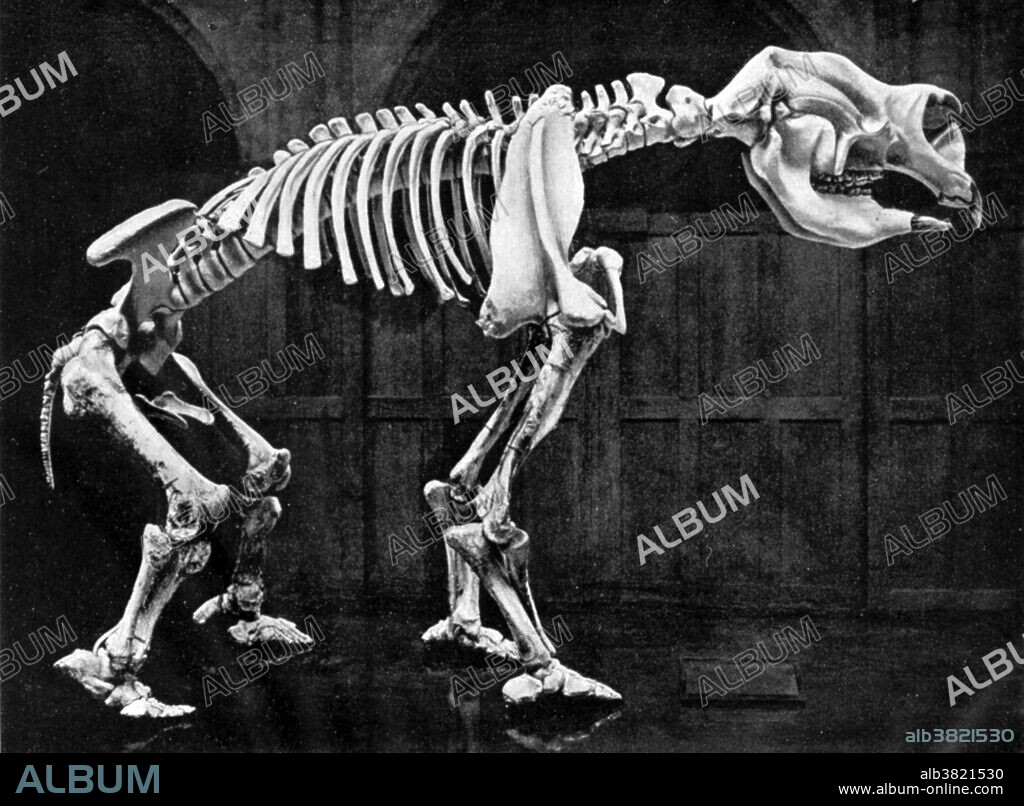alb3821530
Diprotodon, Cenozoic Mammal

|
Add to another lightbox |
|
Add to another lightbox |



Buy this image.
Select the use:

Title:
Diprotodon, Cenozoic Mammal
Caption:
Diprotodon (two forward teeth), sometimes known as the Giant Wombat or the Rhinoceros Wombat, was the largest known marsupial that ever lived. Along with many other members of a group of unusual species collectively called the "Australian megafauna", it existed from approximately 1.6 million years ago until extinction some 46,000 years ago. They inhabited open forest, woodlands, and grasslands, possibly staying close to water, and eating leaves, shrubs, and some grasses. This animal appeared during Cenozoic era, the most recent era of geologic time, from about 65 million years ago to the present. The Cenozoic Era is characterized by the formation of modern continents and the diversification of mammals and plants. Grasses also evolved during the Cenozoic. The climate was warm and tropical toward the beginning of the era and cooled significantly in the second half, leading to several ice ages. Humans first appeared near the end of this era.
Credit:
Album / Science Source
Releases:
Model: No - Property: No
Rights questions?
Rights questions?
Image size:
4350 x 3198 px | 39.8 MB
Print size:
36.8 x 27.1 cm | 14.5 x 10.7 in (300 dpi)
Keywords:
AGE OF MAMMALS • ANATOMY: BONES • ANIMAL • ANIMALIA • ARTWORK • AUSTRALIAN MAGEFAUNA • BONE • BW • CAINOZOIC • CENOZOIC • CHORDATA • CæNOZOIC • DIPROTODON • DRAWING • EARLY 1900'S • EPOCH • ERA • EXTINCT • EXTINCTION • FAUNA • GIANT WOMBAT • HERBIVORE • HERBIVOROUS • HISTORIC • HISTORICAL • HISTORY • ILLUSTRATION • ILLUSTRATIONS • LARGEST KNOWN MARSUPIAL • MAMMAL • MAMMALIA • MAMMALIAN • MAMMALS • PALAEOBIOLOGY • PALAEONTOLOGY • PALAEOZOOLOGY • PALEOBIOLOGY • PALEONTOLOGY • PALEOZOOLOGY • PERIOD • PHANEROZOIC GEOLOGICAL ERA • PLANT EATER • PLANT EATING • PRE-1920'S • PRE-1920 • PREHISTORIC • PREHISTORICAL • PREHISTORY • PRIMARY CONSUMER • RECONSTRUCTION • RESTORATION • RHINOCEROS WOMBAT • SKELETAL • SKELETON • TERRESTRIAL VERTEBRATE • TWO FORWARD TEETH • VERTEBRATE • WILDLIFE
 Pinterest
Pinterest Twitter
Twitter Facebook
Facebook Copy link
Copy link Email
Email
